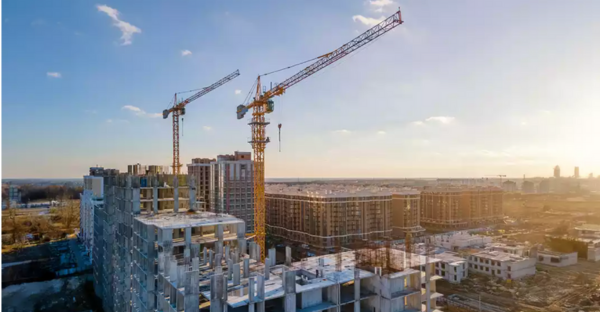As we bear the summer heat, the real estate sector is sweating it out for a different reason. Developers are racing against time to complete their under-construction projects before the first monsoon showers roll in. The pre-monsoon window is a critical period in the construction calendar as it offers the final opportunity to meet delivery deadlines without weather-related delays. This is a good news for homebuyers as they can expect new inventory to pick from in the next few months. “Pre-monsoon completion is both, a planned strategy and a necessity for developers. Additionally, it enhances buyer confidence by meeting agreed timelines, ultimately contributing to customer satisfaction,” asserts Shraddha Kedia-Agarwal, director, Transcon Developers.
Seasonal pressure
The period leading up to the monsoon compels developers to fast-track construction due to a combination of logistical, financial, and regulatory factors. Heavy rains can halt on-site work, damage materials, increase overall project costs, and extend deadlines.
Moreover, delayed timelines can result in penalties, strained buyer relations, and missed sales opportunities. By accelerating completions during the drier months, developers aim to avoid disruptions.
“Safety concerns also play a significant role. It is essential to finish key milestones, such as slab completion before the rains set in. The goal is to prevent any potential water damage and to safeguard the quality of the construction site. If developers do not prepare for this disruption, they risk delays and added expenses that can erode project timelines and budgets,” explains Domnic Romell, president, CREDAI-MCHI. In a market sensitive to delivery timelines, such completions serve as a reassurance, often encouraging quicker decision-making among homebuyers. Under-construction projects are also a key financial concern for homebuyers. Many of them take loans to buy a house while continuing to pay rent, and if a project is delayed, they end up paying both rent and EMI—a significant financial burden. When a project is completed early, buyers can move in sooner and save on rent. “A completed project is more attractive, and developers can sell at a higher price as compared to an unfinished project. Buyers are willing to pay extra for the certainty of immediate possession,” shares Devvrat Rajgopal, head of asset management and growth at Strata Capital.
Adding to this further, Nandakumar P S, head of projects, Assetz, said “On the positive side, early project completion increases demand, as buyers prefer ready-for-possession properties to avoid delays and price escalations. It also builds buyer confidence, enhancing the developer’s reputation and making future projects more marketable. From a buyer’s perspective, early completion helps to achieve quicker rental income if it’s planned as an investment.” For many, this time of the year also aligns with planning around school admissions and job transfers, making pre-monsoon possession particularly appealing.
Also Read: House It Going? Tips For First-Time Homebuyers
Launch landscape
“At the start of FY 2025, top-listed developers announced approximately 253 million sq ft of new launches. However, due to approval delays, only 35 per cent of these projects have been rolled out so far. Much of the remaining pipeline is expected to hit the market in the upcoming quarters. In 2024, developers acquired over 2,515 acres of land, with nearly 77 per cent earmarked for residential development. This signals a steady stream of launches in the coming quarters. Moreover, top developers currently have exceptionally strong balance sheets, with record-low debt levels, providing them with the financial flexibility to sustain new project launches. Despite the current housing sales slowdown, builders are looking beyond the immediate challenges and launching projects for the future. They are still actively planning and launching new projects, particularly in the luxury and premium segments,” shares Santhosh Kumar, vice chairman, Anarock Group.
Also Read: Rent Vs. EMI The Debate Begins
It is also important to note that, “As RERA regulations tighten and buyer awareness increases, developers are incorporating weather-resilient planning into their project execution models. What we’re seeing now is a more systematic approach to managing project timelines, driven by technological advancements like AI-powered project management and PropTech tools. These technologies help developers predict potential delays and plan more effectively, making the pre-monsoon strategy less about reacting to weather and more about being proactive in delivering on time, regardless of the season,” shares Nikunj Sanghavi, managing director, Veena Developers.







 Users Today : 2
Users Today : 2